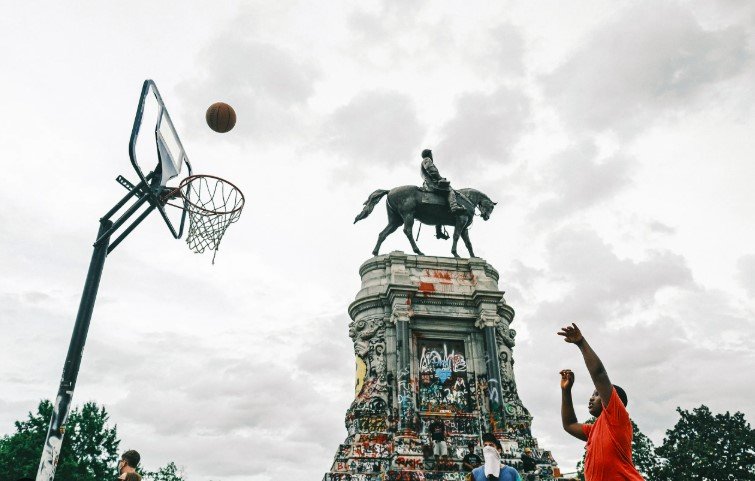Famous statues play a key role in defining national identity. These monumental works of art honor historical figures, celebrate cultural heritage, and symbolize a nation’s values and beliefs. Statues do more than just beautify public spaces; they preserve the collective memory and identity of a country. From representing freedom to commemorating independence, these statues capture the essence of what it means to belong to a nation. Let’s explore some of the most iconic statues that have come to define national identity worldwide.

The Statue of Liberty: A Symbol of Freedom
The Statue of Liberty stands as one of the most recognizable statues in the world and symbolizes freedom and democracy for the United States. France gifted the statue to the U.S. in 1886, and it has since become a powerful emblem of liberty, hope, and opportunity. Situated on Liberty Island in New York Harbor, the statue welcomes millions of immigrants arriving at Ellis Island, representing America as a land of new beginnings.
The statue’s torch symbolizes enlightenment, and the broken chains at its feet represent freedom from oppression. For many, the Statue of Liberty is a reminder of the ideals that define American identity, including individual rights, equality, and the pursuit of happiness.
Christ the Redeemer: A Symbol of Faith in Brazil
In Brazil, the towering Christ the Redeemer statue dominates Rio de Janeiro’s skyline. This 98-foot statue sits atop Corcovado Mountain and has become one of South America’s most famous landmarks. The figure of Jesus, with outstretched arms, serves as both a religious symbol and a representation of Brazilian unity, warmth, and faith.
Completed in 1931, Christ the Redeemer reflects Brazil’s strong Catholic traditions. Its size and presence embody the importance of religion in Brazilian culture, while its welcoming arms represent the nation’s hospitality. The statue also symbolizes the intersection of faith and culture in Brazil, reminding citizens and visitors of the country’s religious roots.
The Great Sphinx of Giza: An Ancient Egyptian Icon
The Great Sphinx of Giza stands as one of the oldest and most famous statues in the world, symbolizing ancient Egyptian civilization. Carved from limestone, the Sphinx features the body of a lion and the head of a human, believed to represent Pharaoh Khafre. Dating back to around 2500 BCE, the Sphinx has long been a symbol of Egypt’s power, mystery, and architectural ingenuity.
Positioned near the Great Pyramids, the Sphinx is considered a guardian of the tombs of the pharaohs. It represents strength, wisdom, and divine protection. As a national symbol, the Sphinx continues to captivate imaginations worldwide and remains a cornerstone of Egyptian identity, embodying the nation’s rich history and cultural pride.
The National Monument of Indonesia: A Symbol of Independence
In Indonesia, the National Monument (Monas) in Jakarta serves as a symbol of the country’s struggle for independence. Completed in 1975, Monas honors Indonesia’s fight for freedom from colonial rule. Standing 132 meters (433 feet) tall, the monument features a golden flame at the top, symbolizing the spirit of independence and the nation’s commitment to progress.
Monas is not only an architectural feat but also a source of national pride. It commemorates the sacrifices made during Indonesia’s revolution and reminds citizens of the country’s journey toward independence. Monas has become a central part of Jakarta’s landscape and is regarded as the heart of the nation, symbolizing unity and resilience.
The Statue of Unity: A Tribute to India’s Unifier
In India, the Statue of Unity stands as a tribute to Sardar Vallabhbhai Patel, a key leader in India’s independence movement. At 182 meters (597 feet), it is the tallest statue in the world, symbolizing India’s unity and strength. Located in Gujarat, the statue was unveiled in 2018 to honor Patel’s role in uniting the country after its independence.
The Statue of Unity represents India’s enduring spirit of unity and the importance of leadership in achieving national progress. Patel’s efforts to integrate India’s princely states into the newly independent nation are celebrated through this monumental figure. The statue stands as a reminder of India’s rich history and the importance of national cohesion.
Conclusion
Famous statues serve as more than just impressive works of art; they are symbols that embody the values, struggles, and triumphs that define a nation’s identity. Whether commemorating freedom, independence, or cultural heritage, these statues capture the spirit of their respective countries. From the Statue of Liberty’s representation of freedom to the Statue of Unity’s tribute to Indian unity, these monuments provide lasting reminders of what a nation holds dear. As we look to the future, these statues will continue to stand as pillars of national pride and historical significance.











